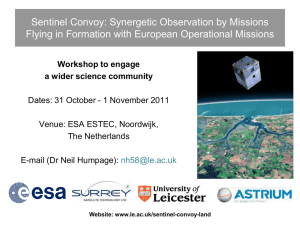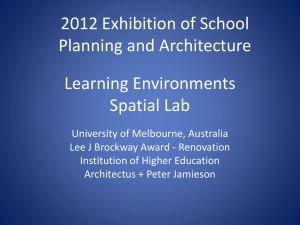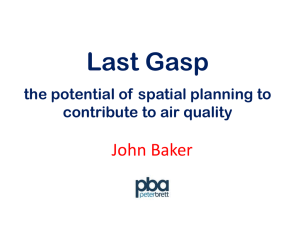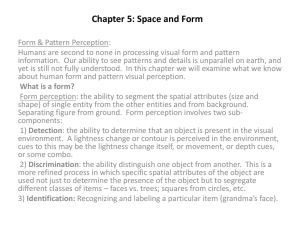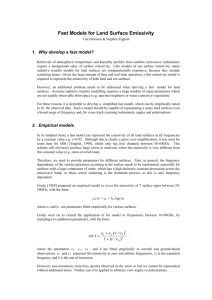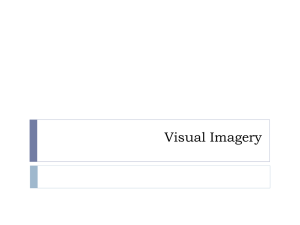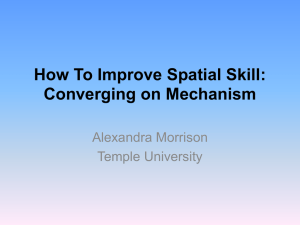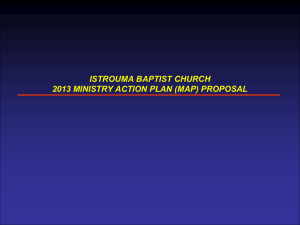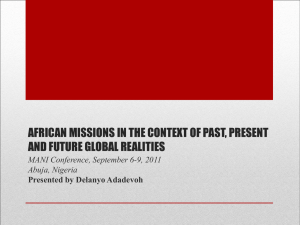Developing EO mission concepts to fly in convoy with the ESA
advertisement
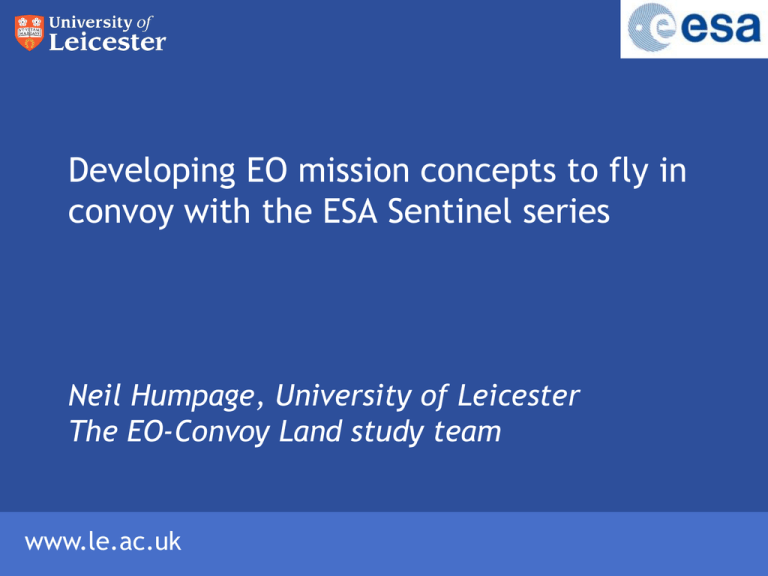
Developing EO mission concepts to fly in convoy with the ESA Sentinel series Neil Humpage, University of Leicester The EO-Convoy Land study team www.le.ac.uk Introduction • ESA are undertaking three studies investigating possible synergistic satellite missions flying in formation with the operational Copernicus and METOP satellites: EO-Convoy studies • These three studies are focused on:– Ocean and Ice – Land – Atmosphere • The EO-Convoy studies comprise two parts:– Identification of science and operational objectives that need addressing via future missions – Definition and development of small cost-effective missions that meet these objectives (see also poster #48 by Rachel Bird, SSTL) Outline • Current and planned EO capabilities for land surface science • Definition of science needs: what observations do the land surface science community require? • Summary of capabilities and gaps: are these requirements met by planned EO capabilities? • Preliminary list of mission concepts to fly in convoy with the Sentinels • Shortlist selected for further study based on assessment by ESA scientists Current and planned missions: Sentinels Sentinel 1 – C-band SAR imaging All weather, day/night applications, interferometry x 2 satellites, 693 km, Dawn dusk orbit S-1A launched April 2014 Sentinel 2 – Multi-spectral high resolution imaging Land applications: Land cover mapping, LAI, chlorophyll Continuity of Landsat, SPOT missions x 2 satellites, 786 km, LTDN 10:30 am 2015 Sentinel 3 – Global ocean and land monitoring Wide-swath ocean color, vegetation, sea/land surface temperature, altimetry x 2 satellites, 814 km, LTDN 10:00 am 2015 Sentinel 4 – Geostationary atmospheric Atmospheric composition monitoring, transboundary pollution Sentinel 5 – Low-orbit atmospheric Atmospheric composition monitoring (S5 Precursor launch in 2015) 2019 2020 Current and planned missions • Operational missions: – ESA MetOp • AVHRR: surface albedo, vegetation (NDVI), land surface temperature, fire area • ASCAT: soil moisture – Suomi-NPP • VIIRS: surface albedo, vegetation (NDVI, LAI, land cover), land surface temperature, fire area and temperature, soil moisture • ATMS: land surface temperature • Science missions (from ESA, NASA and other national space agencies) also considered Science needs: overview • Science areas (loosely) defined to provide a starting point for the study and workshop discussion • Lots of overlap between the identified science regimes… Science needs: overview • Lots of overlap between the identified science regimes… Bonan (2008) Science needs: surface energy balance • Within each science regime, we identify science needs with associated EO variables: through a workshop, literature review and trace-down of science to EO parameters • Gap analysis relates identified needs with current and planned EO capabilities • Surface energy balance shown here as an example Science ref no. S-SE-01 S-SE-02 Science need Assimilation of land surface parameters into numerical weather prediction models Monitoring of surface energy balance and water status of continental biosphere Variable ref no. V-WC-01 Relevant EO variables Comments - Soil moisture V-WC-02 - Snow cover Higher spatial resolution required for soil moisture; V-WC-03 - Snow water equivalent V-CC-03 - LAI V-CC-08 V-WC-01 - Fire radiative power - Soil moisture V-HD-04 - Land use V-SE-03 - Albedo V-SE-02 - LST V-CC-04 - NDVI V-SE-04 - Thermal emissivity Snow line definition and change with time is important High spatial resolution and frequent revisit needed Emissivity required in addition to LST Gap analysis results: surface energy balance I.D. Variable Gap Identified User Needs G-SE-01 Surface albedo and BRDF - Higher spatial resolution and multiangle BRDF measurement to provide improved info on vegetation structure. - 10 m to 50 m spatial resolution - < 1-30 days temporal resolution - < 5-10% accuracy - BRDF (multi-angle) capability G-SE-02 Land surface temperature (LST) - Higher spatial resolution, < 100 m - Improved emissivity observations with more TIR spectral channels to take into account spectral variations. - 50 m to 100 m spatial resolution - 5 day revisit - < 0.5 K accuracy - NeDT < 0.2 - > 1 TIR channel G-WC-02 Land surface temperature (LST) - Higher spatial resolution (< 100 m) to avoid anomalies in LST/emissivity which can be mistaken for soil moisture anomalies. - More TIR spectral channels to take into account spectral variations in emissivity. - 50 m to 100 m spatial resolution 5 day revisit < 0.5 K accuracy NeDT < 0.2 Example of different gaps with similar user needs • More science gaps listed on Rachel Bird’s poster (#48) Preliminary concepts Focus on Concept 3: Wide swath LWIR multi-spectral imager • Bolometer array imager operating several channels in 811 micron wavelength range • Thermal data at GSD ~90m over 290km swath Mike Cutter, SSTL • Fly in convoy with S-2/3 with 1 to 2 minutes separation: – S-2: determined by cloud variability (use S-2 cloud information) – S-3: benefit in understanding finer spatial scale compared with S-3 resolution (1km) Further study of concept: spectral bands for multi-spectral LWIR imager Michael Perry, University of Leicester • • • • Optimisation of spectral window ranges using radiative transfer simulations Maximise sensitivity to both emissivity and temperature Error analysis through optimal estimation retrieval of temperature and emissivity Previous high spatial resolution instruments have either had 8 and 11 or 11 and 12 micron channels. Our optimisation identifies channels in all 3 regions Summary • Current and planned EO capabilities for land surface science have been assessed • Science needs and observational requirements defined • Gap analysis: identifying where science needs are not met by planned EO missions • Preliminary list of concepts reduced to shortlist of three: – Passive SAR with S-1 for improved vegetation height – Thermal multi-spectral imager for joint LST and emissivity at high spatial resolution – Fire at improved spatial resolution (250m) for better estimation of emissions to atmosphere • Result is novel developments which would benefit from convoy operation Acknowledgements • EO-Convoy Land study team: – John Remedios, University of Leicester – Rachel Bird, Surrey Satellite Technology Ltd (poster #48) – Mike Cutter, Surrey Satellite Technology Ltd – Stuart Eves, Surrey Satellite Technology Ltd – David Hall, Astrium Ltd – Amanda Regan, ESA-ESTEC • Science consultants: – Martin Wooster, King’s College London – Heiko Balzter, University of Leicester – Philip Lewis, University College London • Participants in the Sentinel Convoy for Land Applications workshop • Gap analysis document (including workshop report) available here: http://congrexprojects.com/2013-events/13m12/measurement-gapanalysis

